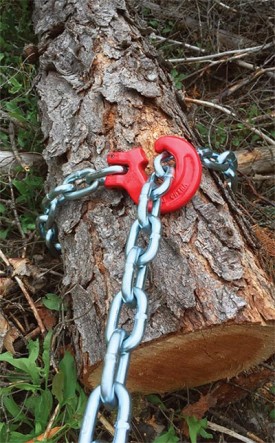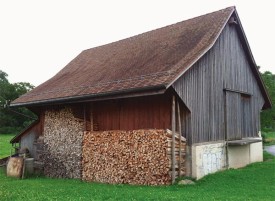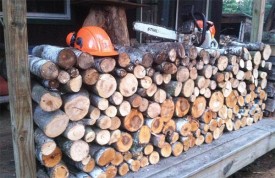I was recently in a big-box farm-supply store and saw a large sign that read, “Wood Chopping Headquarters.” What they meant, of course, was not chopping, but splitting.…
Tricks of the Trade
Tricks of the Trade: Make Your Own Choker Chain
Owning just a single choker chain is a lot like having one Crescent wrench in your toolbox. Sure, you can get the job done, but it would be a lot more efficient (and enjoyable) if you had a…
Woodpile Wisdom: How It All Stacks Up
In 2013, The New York Times ran a story exposing a Scandinavian controversy that has divided Norwegians (and New Englanders) for eons. The question centered around the proper way to stack…
Tricks of the Trade: The D-Log
In college, I spent a summer building hand-hewn Adirondack lean-tos. The work required both precision and persuasion. We’d chisel perfect saddle notches, which often meant rolling the…
Tricks of the Trade: Living Fenceposts
Fenceposts have always baffled me. Why would anyone take a perfectly good tree, cut it down, dig a hole to set it in, and then spend the next 20 years watching it decay? In my early days of…
Tricks of the Trade: Small-Scale Charcoal Production
After bucking this year’s firewood, I found myself with a collection of odd-shaped ends and crotches, perfect for charcoal-making. Charcoal is essentially wood that’s been…
Tricks of the Trade: The Perfect Splitting Block
Wood-splitting is a rural pastime rooted in tradition and experience – experience that’s often measured in broken axe handles and creative curses directed at knotty chunks of…
Tricks of the Trade: Peavey Proficiency
In the last installment of Tricks of the Trade, we examined the venerable peavey, and offered several modifications to make an already invaluable tool even handier. Now it’s time to head…
Tricks of the Trade: Building a Better Peavey
While the mighty axe rightly receives credit for felling most of the timber of the eighteenth and nineteenth centuries, it was the peavey that took the work out of moving these logs, on both…
Coppicing for Firewood
Of all the silvicultural techniques available to forest owners, perhaps no method is more underused than coppicing. Coppicing is a reproduction method where a tree is cut back periodically to…











